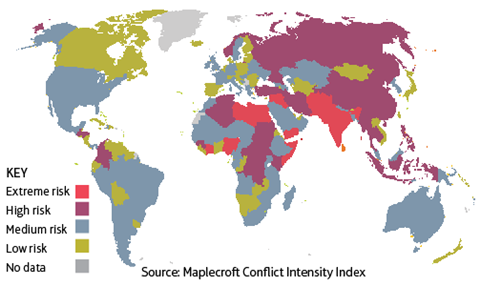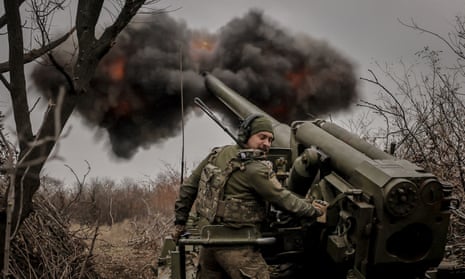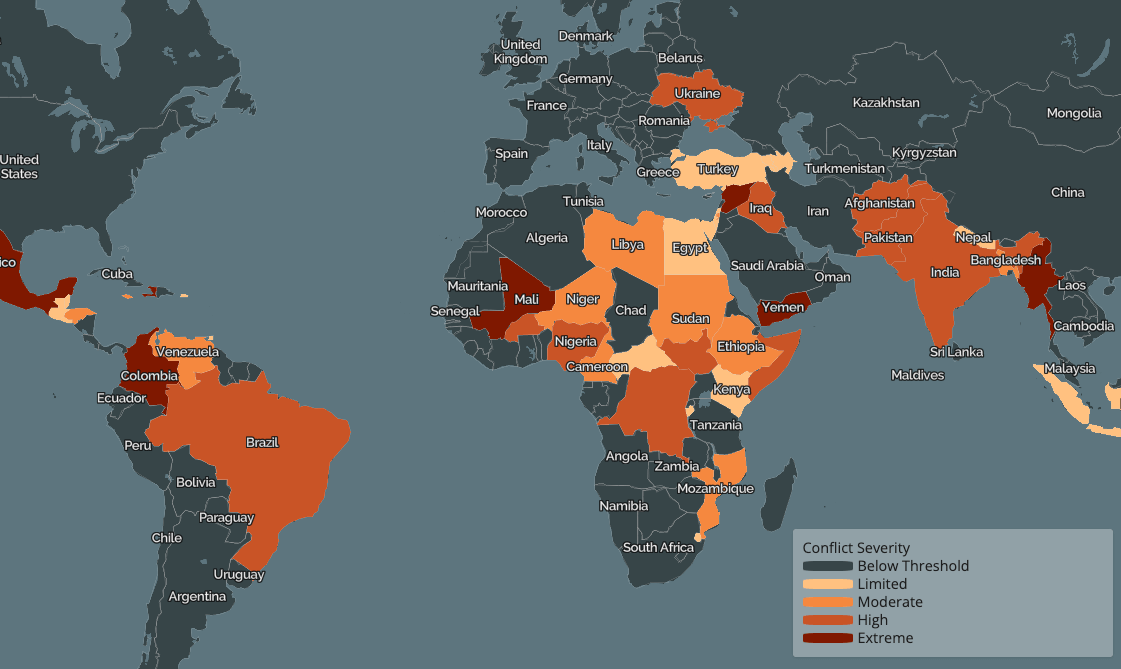Imagine being able to measure the world’s conflicts with just one index. The Global Conflict Intensity Index is designed to do exactly that.
It provides a clearer picture of global tensions and unrest, helping you understand the current state of international affairs. By delving into this powerful tool, you’ll gain insights that go beyond headlines and soundbites. Curious about how this index can impact your perception of world events?
Discover how it can change the way you view global peace and conflict. Stay with us, and unlock the knowledge that could redefine your understanding of today’s world.
Global Conflict Intensity Index Explained
The Global Conflict Intensity Index is a tool to measure world conflict levels. It helps understand how severe conflicts are across different regions. Conflicts can range from small disputes to full-scale wars. This index provides insights into the current global peace situation. Understanding it is crucial for governments, organizations, and individuals. Let’s delve into its details.
What Is The Global Conflict Intensity Index?
This index measures and compares conflicts worldwide. It assesses factors like violence intensity and impact. The data comes from diverse sources, ensuring accuracy. Governments use it to prioritize peace efforts. Organizations rely on it for humanitarian planning. The index helps predict potential conflict escalation.
How Is The Index Calculated?
The calculation involves various conflict-related data points. Analysts study incidents of violence and fatalities. They also consider economic and social disruptions. The result is a score representing conflict intensity. Higher scores indicate more severe conflicts. Regular updates ensure the index remains relevant.
Importance Of The Global Conflict Intensity Index
This index is vital for maintaining global peace. It helps identify regions needing urgent attention. Policymakers use it to allocate resources efficiently. It guides international peacekeeping missions. By understanding conflict trends, actions can be preemptive. This saves lives and promotes stability.
Applications In Real-world Scenarios
Humanitarian organizations plan relief efforts using the index. It helps avoid areas with high conflict risks. Media outlets use it for accurate reporting. Educators incorporate it into peace studies. It serves as a guide for conflict resolution strategies. Businesses use it for safe investment decisions.

Credit: www.strategic-risk-global.com
Historical Background
The Global Conflict Intensity Index provides insights into conflicts worldwide. Understanding its historical background helps grasp how conflict measurement evolved. This index offers a systematic approach to analyzing conflicts. It traces its roots back to early efforts in quantifying conflict levels.
Origins Of Conflict Measurement
Efforts to measure conflict began in the early 20th century. Scholars sought ways to quantify war impacts. They focused on casualties, destruction, and economic losses. This laid the groundwork for systematic conflict analysis.
Initial attempts were crude but paved the way for more refined methods. Researchers aimed to understand conflict severity. They used historical data and statistics. These efforts highlighted the need for a structured index.
Evolution Of The Index
Over decades, conflict measurement evolved significantly. The Global Conflict Intensity Index emerged from these developments. It incorporates various factors to assess conflict intensity. Political, social, and economic elements are considered.
Technological advances improved data collection and analysis. This enhanced the index’s accuracy and relevance. Researchers now use it to study trends and predict future conflicts. The index’s evolution reflects the growing complexity of global conflicts.
Components Of The Index
The Global Conflict Intensity Index is a vital tool. It helps in understanding the severity of conflicts worldwide. The index is built on several components. These components ensure accurate insights into global conflict trends. Let’s explore the key components that shape this index.
Data Sources
Reliable data is crucial for the index. It uses information from various global sources. Governments, research institutions, and NGOs provide data. This ensures a comprehensive view of conflicts. Each source offers unique insights. They help in measuring conflict intensity accurately.
Scoring Criteria
The index uses clear scoring criteria. It evaluates the scale and impact of conflicts. Death tolls, displacement numbers, and economic impacts are considered. Each factor contributes to the final score. This scoring helps in ranking conflicts by severity. The criteria ensure unbiased evaluations. They provide a true picture of global conflict intensity.

Credit: www.theguardian.com
Methodology
Understanding the methodology behind the Global Conflict Intensity Index is crucial to grasping its significance. It’s not just about numbers; it’s about the process that transforms raw data into meaningful insights. This section will take you through the essential steps, explaining how data is collected and analyzed to gauge the intensity of conflicts worldwide.
Data Collection Process
Data collection is the backbone of the Global Conflict Intensity Index. It involves gathering information from various sources like international reports, local news, and governmental databases. Think about it as assembling pieces of a puzzle. Each source adds a unique perspective, helping to complete the picture of global conflicts.
Imagine the complexity of tracking conflicts in regions with limited internet access. Reliable data collection can be challenging, but dedicated teams work tirelessly to ensure accuracy. They use satellite images and on-the-ground surveys to gather data even from the most remote areas.
How do you ensure the data is current? The teams frequently update their sources, adapting to the rapidly changing landscape of global conflicts. This ensures that the Index reflects the most recent developments, providing you with timely insights.
Analysis Techniques
Once the data is collected, analysis begins. Experts use statistical models to interpret the data. They look for patterns and trends that reveal the intensity and impact of conflicts. This is where the magic happens – transforming raw data into actionable insights.
Consider your daily commute. You analyze traffic data to decide the best route. Similarly, experts analyze conflict data to predict future trends and potential hotspots. By understanding these patterns, stakeholders can make informed decisions to prevent escalation.
Do these techniques truly help? Yes, they do. By using advanced algorithms and historical comparisons, analysts can identify the root causes of conflicts. This helps organizations to implement strategies that address underlying issues, promoting peace and stability.
Understanding the methodology is not just for analysts or policymakers. It’s for you, too. It empowers you to comprehend the complexities of global conflicts, fostering a deeper awareness of the world around you. Could this knowledge inspire you to contribute to global peace efforts? The answer lies in your hands.
Current Global Tensions
The Global Conflict Intensity Index is an essential tool for understanding the world’s current geopolitical climate. With tensions simmering in various corners of the globe, it’s crucial to stay informed about these hotspots. Whether you’re a seasoned analyst or a curious reader, understanding the dynamics of current global tensions can help you grasp the complexities of our world today.
Regional Hotspots
The Middle East remains a focal point of global attention. Long-standing conflicts in Syria and Yemen continue to cause humanitarian crises. Political instability in Lebanon also adds to the region’s volatility.
In Asia, tensions between India and Pakistan are a constant concern. Both countries have nuclear capabilities, making any escalation potentially catastrophic. The South China Sea is another area where geopolitical friction is evident, particularly involving China, Taiwan, and neighboring countries.
Africa has its share of regional hotspots too. The conflict in Ethiopia’s Tigray region has drawn international concern. Meanwhile, political unrest in Sudan threatens to destabilize the surrounding areas.
Emerging Conflicts
Some conflicts may not yet be on your radar but deserve attention. Myanmar’s military coup has led to significant internal strife and widespread protests. This has implications not only for its citizens but also for regional stability.
In Eastern Europe, tensions in Ukraine have shown signs of escalating. Russia’s actions in the region are closely monitored by the international community. The potential for conflict is always present, making it a critical area to watch.
Latin America is witnessing emerging conflicts as well. Venezuela’s ongoing economic crisis has led to political turmoil. This impacts neighboring countries as people flee seeking refuge.
What can you do to stay informed about these global tensions? Regularly follow credible news sources. Engage with experts and analysts to deepen your understanding. By staying informed, you can better appreciate the complexities of international relations and their impact on global peace.

Credit: acleddata.com
Impact On Global Policy
The Global Conflict Intensity Index influences global policy decisions. This index measures conflict levels worldwide. Its data guides policymakers in creating effective strategies. Understanding its impact is vital for informed decision-making. It affects diplomacy and aid allocation significantly.
Influence On Diplomacy
The index shapes diplomatic efforts. Countries use it to assess global conflict situations. They prioritize peace talks based on index data. This helps in focusing on high-conflict areas. Diplomats rely on it for informed negotiations. It fosters international collaboration for conflict resolution.
Aid Allocation
The index guides aid distribution globally. Governments allocate resources based on conflict intensity. High-conflict areas receive more aid. This ensures effective use of resources. Aid organizations plan interventions using this data. It helps address urgent humanitarian needs swiftly.
Challenges In Index Application
Measuring global conflict intensity presents unique challenges. Data collection can be inconsistent and subjective. Various regions have different reporting standards, making comparisons difficult. Additionally, rapidly changing situations in conflict zones add complexity to maintaining accurate and timely index data.
### Challenges in Index Application Applying the Global Conflict Intensity Index presents multiple challenges. These challenges can affect the reliability and usefulness of the index. Understanding these hurdles is crucial for anyone relying on this index for insights.Data Accuracy Issues
Data accuracy is a significant concern. You might wonder how reliable the data sources are. Many conflict zones are difficult to access, making data collection challenging. Sometimes, data is outdated by the time it’s published. This lag can lead to inaccurate assessments of current conflict intensity. Imagine trying to make decisions based on yesterday’s news—it’s not ideal, right? In my experience working with data, I found that even minor inaccuracies can lead to major misinterpretations. This is why data verification is crucial. Always question the source and timeliness of the data you rely on.Political Influences
Political biases can skew the index. Governments might not report all incidents accurately. This can lead to underreported conflict levels. You might notice that some countries are portrayed more favorably than others. This can be due to political alliances or media control. Always consider who benefits from the way data is presented. Reflect on a time when you read about a conflict and later found out the situation was different than reported. This experience highlights the need to scrutinize political influences. Being aware helps you make more informed decisions.Navigating these challenges requires vigilance and critical thinking. Consider how these factors might alter your understanding of global conflicts. What steps can you take to ensure the information you use is as accurate and unbiased as possible?
Future Of Conflict Measurement
The Global Conflict Intensity Index is a vital tool in understanding global peace and security. As conflicts evolve, the measurement methods must also adapt. The future of conflict measurement lies in embracing new technologies and predicting trends. This shift is essential for accurate and timely analysis.
Technological Advances
Technology plays a key role in measuring conflict intensity. Satellite imagery offers real-time monitoring of conflict zones. Machine learning analyzes large data sets quickly. These tools enhance accuracy in tracking conflict patterns. Social media provides insights into public sentiment during conflicts. It’s increasingly used to gauge tension levels.
Artificial intelligence predicts conflict escalation. It analyzes historical data and current events. These advancements make conflict measurement more precise. They provide faster responses to emerging threats.
Predictions And Trends
Identifying trends in conflicts helps anticipate future challenges. Economic instability often precedes political unrest. Cultural differences can trigger regional tensions. Environmental issues are increasingly linked to conflict. These factors must be considered in future predictions.
Data-driven predictions improve conflict prevention strategies. They enable better resource allocation and diplomatic efforts. Understanding these trends is crucial for maintaining global peace.
Case Studies
Case studies offer real-world insights into global conflicts. They show how different regions handle disputes. These examples highlight successes and lessons. Studying these cases helps us understand conflict dynamics better. Let’s explore two important aspects: success stories and lessons learned.
Success Stories
Some nations have managed to reduce conflict intensity. A notable example is Colombia’s peace process with FARC. The government and rebels reached a historic agreement. This reduced violence significantly. Dialogue and compromise were key elements. In Northern Ireland, the Good Friday Agreement brought peace. It ended decades of violence. Cooperation between political parties played a crucial role. These stories show that peace is possible.
Lessons Learned
Conflicts teach valuable lessons. Many countries learn from past mistakes. Rwanda experienced a tragic genocide. It now focuses on national unity and reconciliation. Education and community engagement are vital. In the Balkans, cultural understanding aids peace efforts. Addressing historical grievances is essential. These lessons emphasize prevention and healing. They guide future peace initiatives. Success requires understanding and adaptation.
Frequently Asked Questions
What Is The Global Conflict Intensity Index?
The Global Conflict Intensity Index measures the severity of conflicts worldwide. It assesses factors like violence level and geopolitical impact. The index helps in understanding global conflict trends. It is a tool for policymakers and researchers to analyze conflict dynamics.
How Is Conflict Intensity Measured?
Conflict intensity is measured using various indicators. These include casualty rates, economic impact, and displacement levels. Data is collected from reliable sources like governmental reports and international organizations. The measurement helps in quantifying the severity of conflicts.
Why Is The Index Important For Policymakers?
The index provides crucial insights for policymakers. It helps them prioritize areas needing intervention. Understanding conflict intensity aids in resource allocation. It also guides diplomatic strategies and humanitarian efforts. Policymakers use the index for informed decision-making.
How Does The Index Impact Global Awareness?
The index increases global awareness about conflict severity. It highlights regions needing urgent attention. Media outlets use the index for reporting. It fosters international dialogue on peace and conflict resolution. The index educates the public on global conflict issues.
Conclusion
The Global Conflict Intensity Index offers crucial insights. It helps us understand the scale of global conflicts. Tracking these conflicts is vital for peace efforts. Governments and organizations can focus on areas needing attention. The index helps prioritize resources effectively.
Early intervention can prevent escalation. Understanding conflict patterns is key. It aids in building safer communities worldwide. Everyone plays a role in promoting peace. Awareness and action go hand in hand. Stay informed and engage in meaningful discussions. Every effort counts towards a peaceful future.
Let’s work together for global harmony.